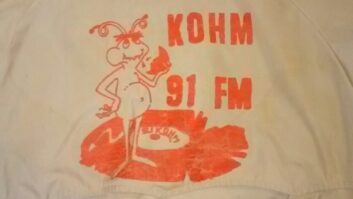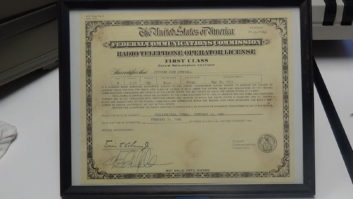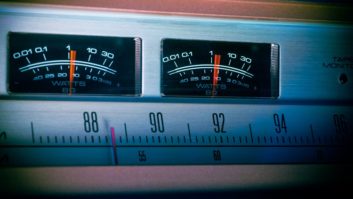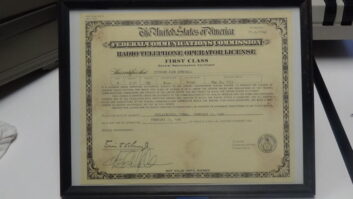When No Other Means Exist
“Three Takes on the Radio Business” (Radio World, Sept. 11), featuring the comments of Dennis Weidler, general manager of KICY(AM/FM) in Nome, Alaska, prompted a recollection of one time on the air at KFAR(AM) in Fairbanks 40 years ago, in 1973.
A Saturday evening show called “Tundra Topics” indirectly announced messages to outdoorsmen in the bush, who otherwise had no conventional means of communication. (It was long before the days of cellphones.) Because of FCC rules, each message had to be prefaced, “If John Jones is listening, then he would be interested to know the following …” They were usually telephoned to the station and of routine substance.
One night, just prior to the show’s airing, a caller reported that the brother of a man beyond contact had drowned that day in the Fairbanks River. “We have no way to reach him except via ‘Tundra Topics,’” the caller said.
These were the most challenging and emotional words I have spoken into a microphone. I shall always remember it.
Dale R. Leslie
Retired Broadcaster
Ann Arbor, Mich.
All-Around Kudos

Wow, that was an action-packed issue! Radio World is always interesting and informative to me, but the collection of articles in the Nov. 6 edition really kept me reading every page, cover to cover.
First, it was informative to see how Brazil, as with our neighbors in Canada and Mexico, is handling the “degraded AM band challenge” by planning to migrate many of the senior-band stations to FM.
Personally, in our country, my considered preference would be to move all AM stations, over an FCC-mandated period of time, to the TV Channels 5 and 6 bandwidth. The FCC set a deadline for the TV conversion to digital, and I believe it should do the same for AM radio.
Not establishing a firm mandate for an AM conversion, I think, would be a repeat of the AM stereo debacle. Let’s not do something like that again. Time is a’wasting on the needed resolution of AM’s challenges. We would do well to follow Brazil’s initiative.
Next, I so much respected the focus in the article on the critical role that engineers and technical staff play in keeping stations (and the digital platforms and infrastructure) on the air, and not just during emergencies. Major kudos to Beasley/Augusta, Ga.-based engineer Charlie McCoy and the others on his team for getting the (twice!) lightning-damaged station group back in business. Such experience, professionalism and dedication are priceless.
Third, I was especially interested in the follow-up article on the new, lower iBiquity license fees. As a recent winner of a new frequency in the FCC FM Auction 94, the incorporation of HD Radio into the build-out and operation of my new station is critically important to me.
There are no HD Radio-operating stations in the small Texas market I will be serving, but I would like to change that. As a younger, “next generation” broadcaster-to-be, I recognize the necessity of using the different digital technologies and platforms if radio is to survive in the years ahead. Digital devices and content delivery are what the young people of today demand. If we don’t meet these digital expectations across all audio-delivery platforms (automobile, portable, handheld and more), we can kiss our livelihoods and passion for radio goodbye. I can’t even imagine that prospect.
The somewhat related article on the “digital directors” at Entercom, Emmis and Radio Disney just underscores the requirement for innovation and delivery in the digital realm. As Tim Murphy of Entercom said in the piece, both audience members and advertisers benefit from the programming, promotions and brand awareness that are the new digital platforms.
Finally, the feature on Bruce Vaughan and his autobiography moved me. His book talks about his decades of involvement, both as a businessman and radio and TV broadcasting technological devotee. His story is our story, even if it comes from a different aspect of the industry.
Vaughan caught the radio “bug” at a very young age. So did I. In my case, in the 1970s, in mid-Michigan, I was one of the kids who would sneak a small AM transistor radio into bed at night — with an earphone, of course, so as not to get caught — to be mesmerized by the clear-channel “blowtorches” like CKLW, WLS, WGN, WLW, WABC, KMOX and so many, many more AMs across the entire North American continent, not to mention South America, Cuba and beyond.
I’m sure there was many a morning when Mom wondered why I was so bleary-eyed, but with a satisfied smile on my face from the overnight, skywave radio adventure that we now call DXing. I look forward to reading the Vaughan memoir.
So, thank you, Radio World, for such a great read. This issue especially reminded me of why I’m in the radio business that I love, and why I always look forward to each and every new publication of Radio World to arrive in the mailbox.
Robert E. Lee
Owner
Lee MediaWorks LLC
Abilene, Texas










